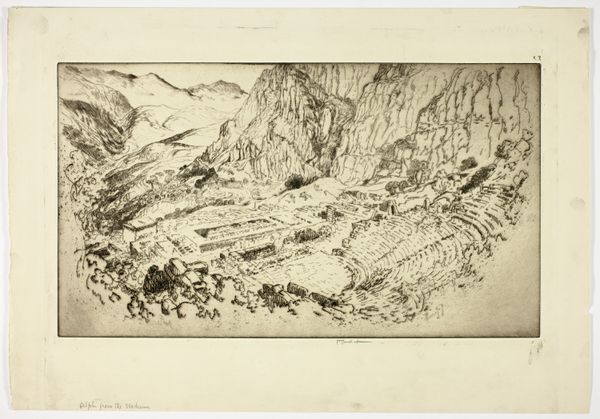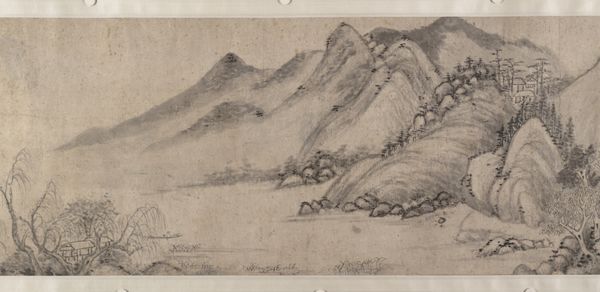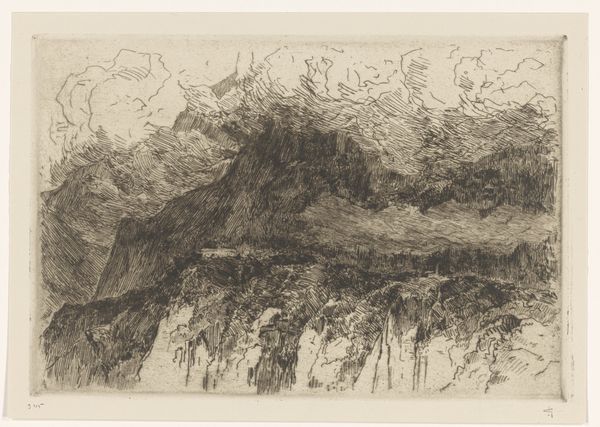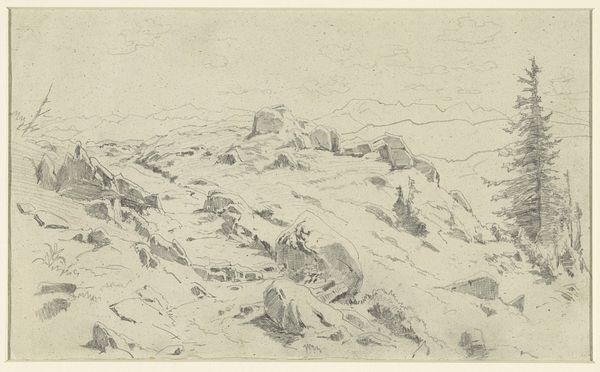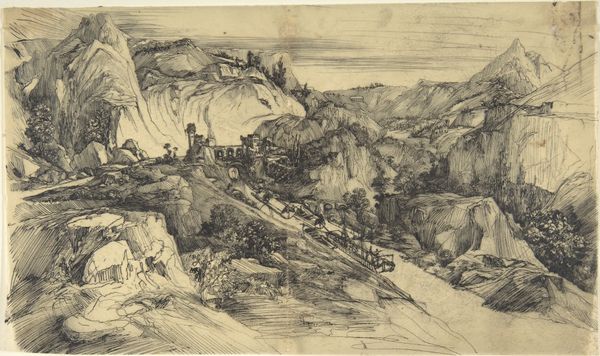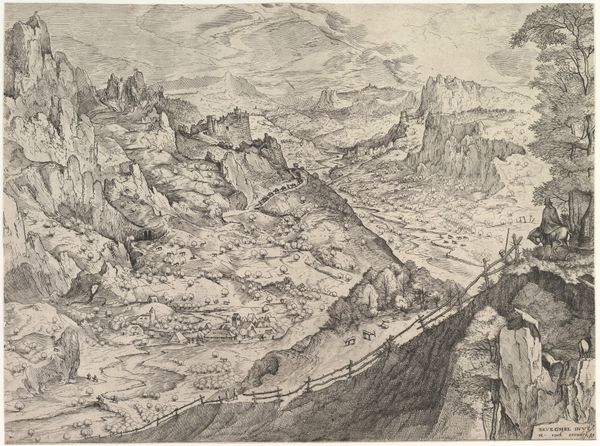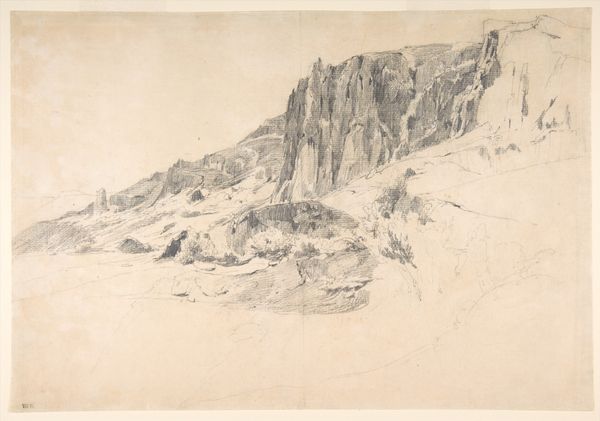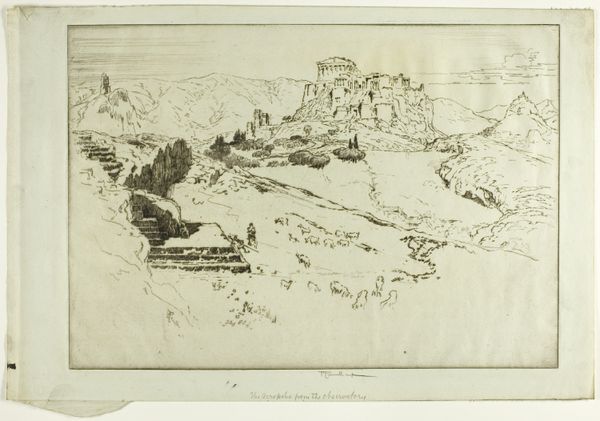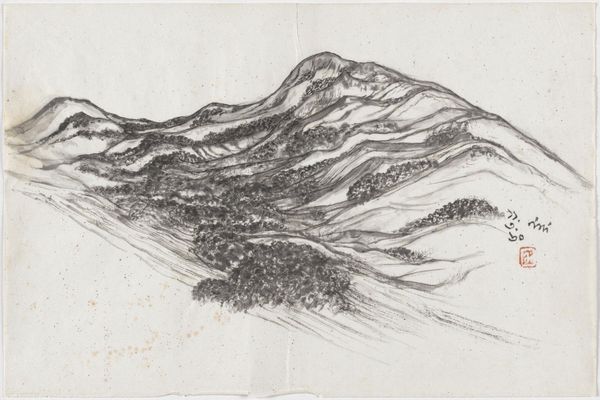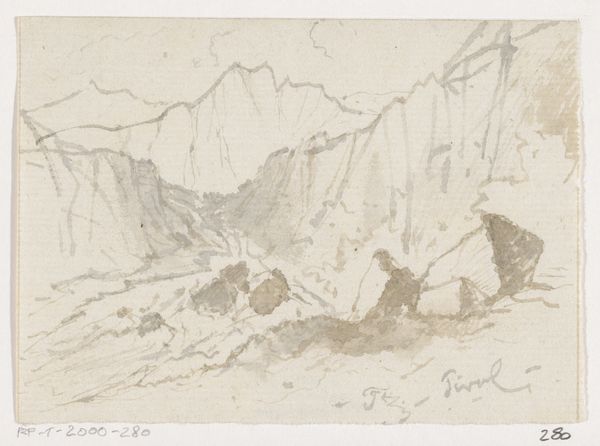
drawing, print, etching, paper
#
drawing
#
ink painting
# print
#
etching
#
landscape
#
etching
#
paper
Dimensions: 239 × 310 mm (image/plate); 290 × 440 mm (sheet)
Copyright: Public Domain
Curator: Joseph Pennell’s "Culebra Cut, Panama," dating from 1912, captures the sheer magnitude of the Panama Canal construction. What’s your first impression? Editor: It's striking. There’s an unsettling stillness about the scene, despite the implied industrial activity. All those carved lines...the stark black and white, it feels almost apocalyptic, but meticulously rendered. What materials did Pennell use? Curator: It's an etching, so ink on paper, allowing for this incredible detail. Consider how the cut itself, this enormous gash through the landscape, is not just a feat of engineering, but a powerful symbol of man’s ambition and domination over nature. Editor: Yes, the making of the etching itself parallels that ambition! Think of the physical effort, the corrosive bite of acid into the metal plate, the press… it’s about forcing an image, forcing a reality, onto the world. The lines are so sharp. They convey power. Curator: I'm particularly interested in how he uses light and shadow. There’s a clear visual language to the scene. See how the clouds seem to mirror the earth beneath. There is this sense of awe in the face of the impossible that is a potent element in these types of images. Editor: I'm struck by the absence of figures. Where are the laborers? We only see the result of their effort and are not able to really reckon with what that human toll might be. Curator: That’s a compelling point. It leaves us grappling with this tension, this gap in our understanding of how such massive work happens. The visual and the unsaid carry a weight, the ambition itself as monumental as it is unsettling. Editor: It makes me wonder about Pennell's motivations. Was he celebrating progress, or quietly documenting its darker side? This piece shows how landscape art evolved to incorporate and reflect modern industrial processes and their impacts. It goes beyond just celebrating picturesque views. Curator: Right. A new sublime, perhaps? Thank you. Thinking through this now, I can almost feel how it holds both pride and an unsettling absence within its lines. Editor: It’s been a worthwhile discussion. Considering the labor involved gives me an appreciation for the complexity behind even such a small work.
Comments
No comments
Be the first to comment and join the conversation on the ultimate creative platform.
